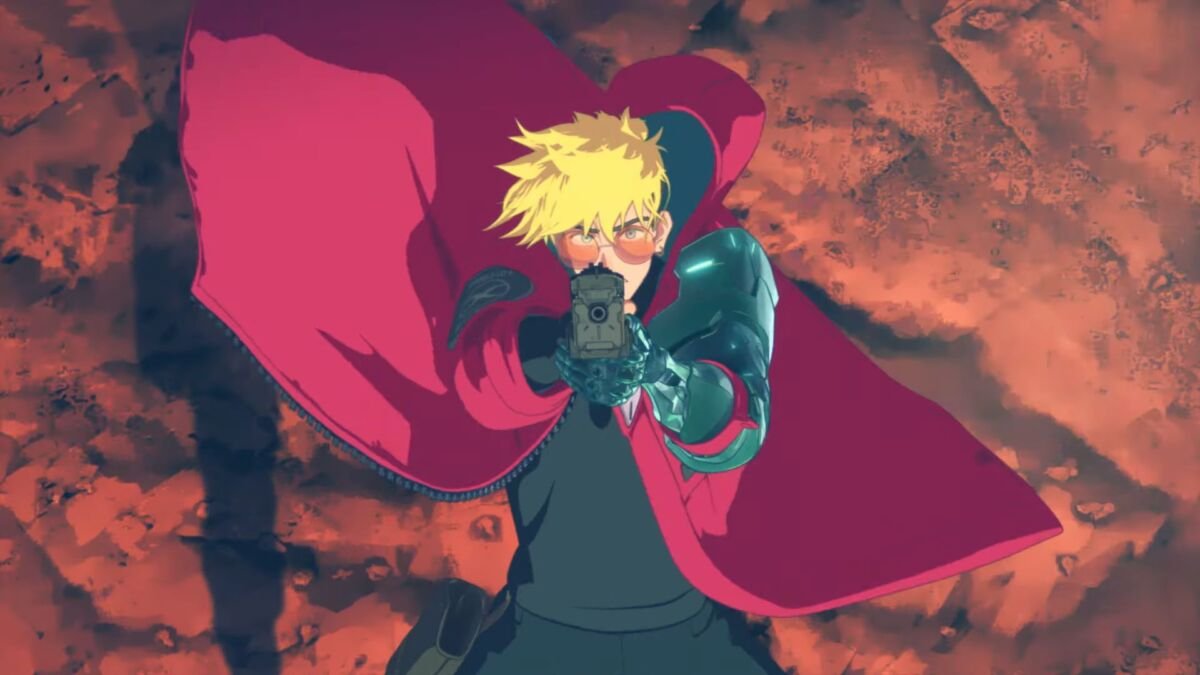Rollicking, dramatic and full of action, the anime “TRIGUN STAMPEDE” wrapped up its first season on March 25. Based on the manga “Trigun” and “Trigun Maximum” by Yasuhiro Nightow, the show was created by the Japanese animation studio Orange, also known for “Beastars,” and follows an adventurous, clumsy and surprisingly pacifist gunslinger named Vash the Stampede who’s doing his best to help the remains of humanity stranded on a desert planet called Noman’s Land.
While it starts off as a somewhat goofy space Western show that offers a fun but not-too-serious time, “TRIGUN STAMPEDE” quickly grows into an emotionallyresonating tale that deals with themes of family, humanity’s defining characteristics, the value of life and what it means to be a monster.
Vash is joined on his journeys by Meryl Stryfe, a newbie journalist who’s determined to get a good story about him, Meryl’s coworker and reluctant mentor Roberto and the grouchy undertaker and mysterious bodyguard Wolfwood. Vash, along with his brother Naï, are artificially created life forms known as “plants,” which generate water and power for the humans on Noman’s Land, and they are the only ones of their kind who look like humans and can act independently. Naï wants to destroy humanity for its exploitation of plants, while Vash wants to help it survive in the hostile environment; the brothers’ grievances grow over the course of the season to culminate in an epic finale showdown which neither truly wins.
“STAMPEDE” isn’t the first adaptation of the 16 volumes of Nightow’s work – a “Trigun” anime was also released in 1998 after the publication of the original series and as “Trigun Maximum” was beginning to be published. While this show is well regarded, the limitations of it finishing before a fraction of the story was even complete means there’s never truly been a full adaptation until now.
“STAMPEDE” isn’t a perfect replica, however, and Orange has instead built upon the original series to craft something new. The show plays around with the timelines of “Trigun Maximum” to create a narratively satisfying first season and set up for season two, which is primed to deal with the bulk of the original series.
The love Orange has for its inspiration is clear regardless of the reworks: lines pulled straight from the manga are recontextualized and given new meaning in the show, and there are other Easter eggs that simply show how much they know and respect the original story. Major changes made to the story seem to emphasize the original themes rather than detract from them, or they give women more agency and personality than they were originally granted.
Orange’s signature style is the use of 3D animation, occasionally derided within the traditionally-2D world of anime as looking clunky or cheap, and they defy the stereotypes of the art form with “STAMPEDE,” which is smooth and polished. The entire show is gorgeously animated, but Orange’s strengths with the style come out in the action sequences and fight scenes, which are dynamic, weighty and just plain cool. The writing creates a compelling plotline that easily transitions from the silly moments of the first episode to the serious emotional beats of the finale, aided by phenomenal voice acting and a beautiful original soundtrack by Tatsuya Kato.
“TRIGUN STAMPEDE” masterfully grapples with what it means to cherish life above all else, what it takes to survive in an often-deadly world and what the value is of protecting others at the cost of your own humanity. The show is available to stream on Hulu and Crunchyroll, with an English dub available on the latter service.







